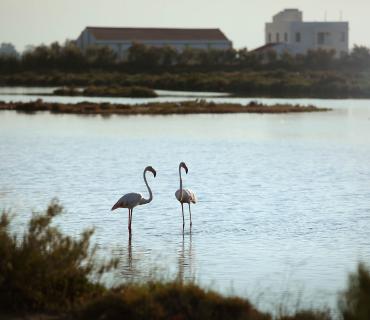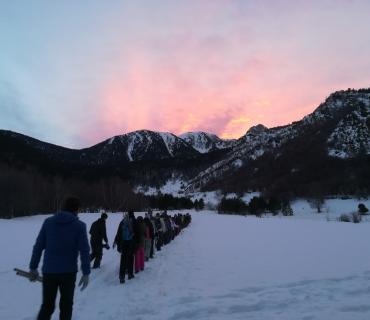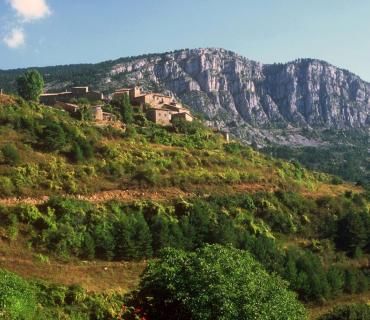Nature Campus
Programme targeted at baccalaureate students with a particular interest in the field of biodiversity and nature conservation with the goal of encouraging youths’ scientific vocations in this field of research.
Entities


The Advanced Study Centre of Blanes (CEAB) is a research centre of the Spanish National Research Council (CSIC), which depends on the Ministry of Economy and Competitiveness. The CEAB opened in October 1985, and its research currently revolves around the fields of the ecology and biology of organisms, both marine and continental systems. The overarching objectives of the research conducted at the CEAB are to identify the diversity of organisms and understand their functions and interactions in nature, as well as to apply this knowledge to the use and rational management of our planet's resources and to predict responses to environmental changes. It works with a wide range of studies and approaches ranging from the biochemical and genetic composition of organisms to the structure and dynamic of populations and ecosystems.


Casa Milà (1906-1912) was built by the architect Antoni Gaudí, and was commissioned by Pere Milà and Roser Segimon. The name of the building, "Casa Milà", comes from the fact that it was to be the new residence of the Milà family. The couple occupied the main floor and rented out the remaining apartments. Casa Milà is the most iconic of Antoni Gaudí’s civilian architecture buildings, both for its construction and functional innovations, and for its ornaments and decoration. It is a work of art. The building is known as "La Pedrera" for its outer façade, which is similar to an open quarry, and it was inspired by nature. It was Gaudí's last civilian design, and it broke the rulebook at the time.


Món Sant Benet is a cultural, tourist and leisure project that is one of a kind. In these unique facilities you can find a medieval monastery just metres away from an innovative international centre for culinary research. All in incomparable natural surroundings. Innovative guided tours round the monastery, varied and high-quality cuisine, visits and activities run by the Alícia Foundation (Food and Science), and more. Món Sant Benet combines medieval art, nature and cuisine, creating a centre that is attractive and designed for visitors of all ages.


MónNatura Delta de l'Ebre is a great centre designed to understand and enjoy the magic of the Delta. Salt, traditional fishing and bird watching are the three main driving forces that move and lead the MónNatura Delta de l'Ebre, formed by a set of spaces that give value to this territory and the biodiversity that surrounds it. The Catalunya La Pedrera Foundation has restored the old salt flats at La Tancada, which cover a surface area of 41.2 hectares, highlighting the environmental value of the area through a range of open spaces and a variety of leisure and educational activities that allow visitors to discover the lagoon and surrounding area.


MónNatura Pirineus, which opened in 2002, is a facility run by Catalunya La Pedrera Foundation that offers stays and activities aimed at all kinds of audiences with a very clear mission: to raise public awareness of sustainable development and protecting our environment and landscape through environmental education activities. Located in the beautiful landscape of Valls d'Àneu, in Pallars Sobirà, MónNatura Pirineus is a centre in the Pyrenees with unique facilities that allows visitor to enjoy life in the mountains and discover everything they have to offer, while valuing a culture of sustainability and identifying and respecting the different elements that make up the landscape. The centre is housed in a bioclimatic building with a surface area of more than 3,000 m2 that is powered by renewable energy. The building includes the residential and services area and the activity area, a wildlife centre offering visitors a first-hand look at the species that live in the Pyrenees, and an astronomical observatory for educational purposes. The observatory offers spectacular views thanks to the absence of light and air pollution, and it is a member of the international network endorsed by the Minor Planet Center (MPC), part of the International Astronomical Union (IAU).


The Alinyà Mountain Nature Space is located in the Catalan Pre-Pyrenees, the only region in Europe where you can easily spot the four species of vultures on the old continent: the Egyptian vulture, bearded vulture, Griffon vulture and black vulture. Sitting between the Sierra del Cadí and the river Segre, Alinyà Mountain Nature Space, is the largest expanse of privately owned land in Catalonia. The space covers over 5,000 ha, and ranges between 500 and 2,380 m in altitude, with a rugged landscape that gives it a range of landscapes. Fields, rivers, forests, mountaintops, cliffs and scree are all part of this group of exceptional ecological and landscape riches, where the Pyrenean wildlife lives in harmony with the local population.



